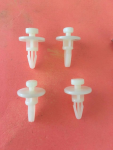PhiloEpisteme
Guru
- Joined
- Oct 18, 2018
- Messages
- 969
Hi folks,
I posted recently about a backup scheme, basically comparing a backup FreeNAS box vs SAS enclosure. After my post I did a bit more searching online looking at used parts and put together the following build.
Chassis (used, includes PSUs and backplane): IBM HS-1235T 2U 12 Bay Storage Server
Board (used): Supermicro X9SCM-F, X9SCM-iiF, or X9SCL+-F
NIC (used): Built-in Intel 82574L
CPU (new): Intel Core I3-3250 2cpu, 4 threads, 3.50GHz
Memory (used): 8GB (1DIMM) Crucial DDR3-1600 ECC UDIMM CT102472BD160B
HBA (used): LSI 9207-8i
Storage Pool 1: 1 vdev
I think I can get the above (minus the drives) for ~$425. This really appeals to me because if this works it is only $225 more than the SAS enclosure I was looking at for backup purposes but has much better expandability and usability.
How suitable is this setup for a backup system? Is it so antiquated that I would expect it to fall over soon?
If I am only backing up at night should I expect those desktop drives to stand up to the task? Especially given that I'll rotate them out off-site every month.
What are other things should I consider here that I may be missing?
I may end up putting a 10Gbps network card in both of my NAS boxes, and if my backups outgrow available space I'd put another HBA in this one as well.
I know that there are much newer and better boards etc out there. My primary interest (other than data security) right now is cost. I didn't skimp too much on my main build but I am looking to cut costs where I can without sacrificing the safety of my data for my backup. This is why I'm looking at older x9 board instead of newer board. If the costs were even a little higher it would push me toward just picking up a $200 SAS enclosure and calling it a day.
I posted recently about a backup scheme, basically comparing a backup FreeNAS box vs SAS enclosure. After my post I did a bit more searching online looking at used parts and put together the following build.
Chassis (used, includes PSUs and backplane): IBM HS-1235T 2U 12 Bay Storage Server
Board (used): Supermicro X9SCM-F, X9SCM-iiF, or X9SCL+-F
NIC (used): Built-in Intel 82574L
CPU (new): Intel Core I3-3250 2cpu, 4 threads, 3.50GHz
Memory (used): 8GB (1DIMM) Crucial DDR3-1600 ECC UDIMM CT102472BD160B
HBA (used): LSI 9207-8i
Storage Pool 1: 1 vdev
vdev-0 (New, Mirrored) = 2xSeagate BarraCuda ST8000DM004 8TB 5400 RPM
Storage Pool 2:vdev-0 (New, Mirrored) = 2xSeagate BarraCuda ST8000DM004 8TB 5400 RPM
Boot pool (new): USB stickI think I can get the above (minus the drives) for ~$425. This really appeals to me because if this works it is only $225 more than the SAS enclosure I was looking at for backup purposes but has much better expandability and usability.
How suitable is this setup for a backup system? Is it so antiquated that I would expect it to fall over soon?
If I am only backing up at night should I expect those desktop drives to stand up to the task? Especially given that I'll rotate them out off-site every month.
What are other things should I consider here that I may be missing?
I may end up putting a 10Gbps network card in both of my NAS boxes, and if my backups outgrow available space I'd put another HBA in this one as well.
I know that there are much newer and better boards etc out there. My primary interest (other than data security) right now is cost. I didn't skimp too much on my main build but I am looking to cut costs where I can without sacrificing the safety of my data for my backup. This is why I'm looking at older x9 board instead of newer board. If the costs were even a little higher it would push me toward just picking up a $200 SAS enclosure and calling it a day.

